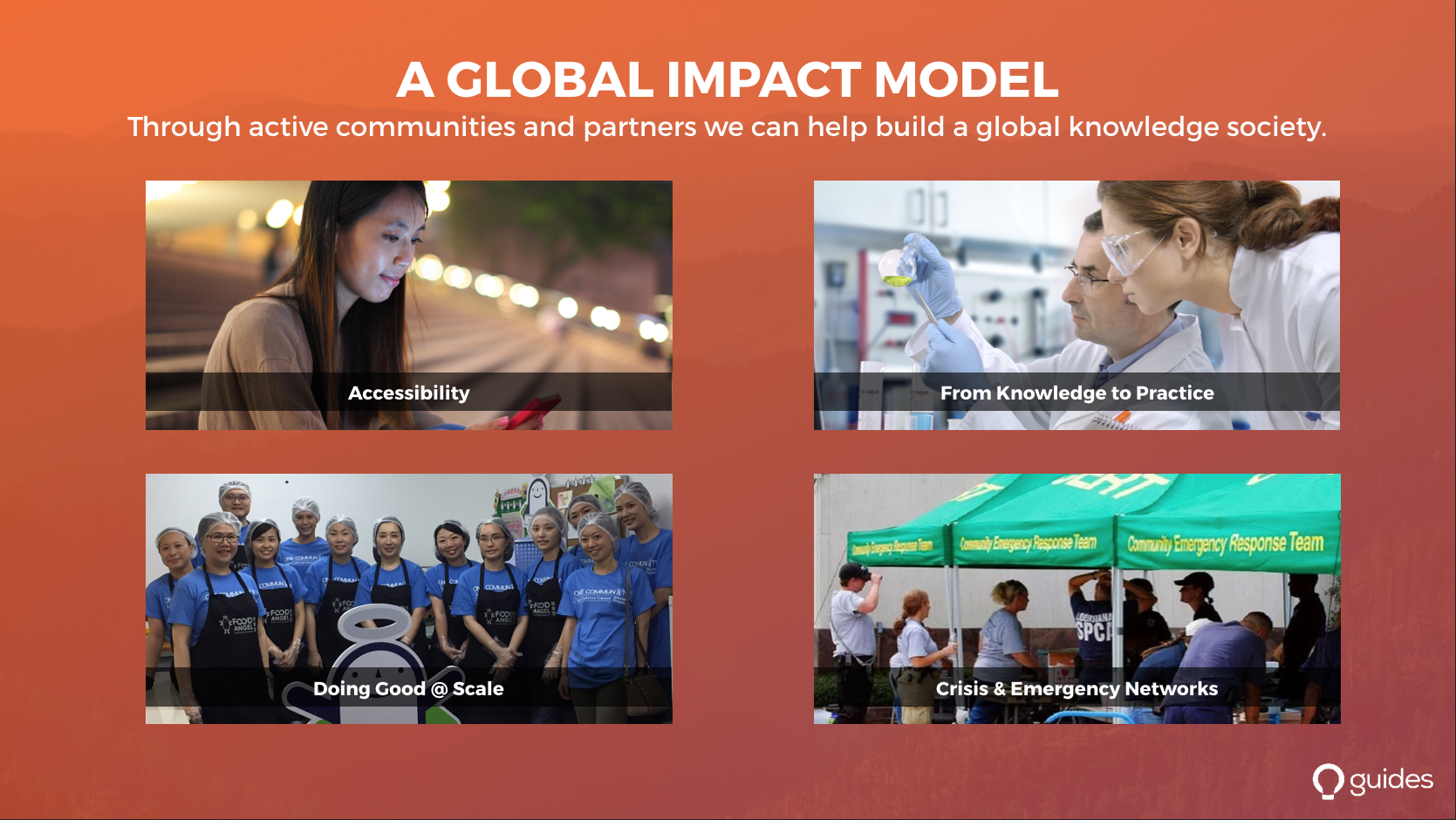Social Impact Model

Over the last three years, after working with thousands of individuals, organizations, governments, and industries, we've learned in-depth the challenges of knowledge access.
Through these learnings, we've realized that Guides can have the greatest impact for:
- People in crises, distress, or disruption (both personally and professionally)
- Organizations outside of urban centers without access to services
- Organizations without the financial means to access professional training & services
Fortunately, there are many organizations that are working to provide support, but they lack the coordination, distribution capabilities, and scale that Guides provides. To maximize our social impact, we believe that it is essential that we focus on supporting organizations that are working to increase knowledge access. These include international, national, and local:
- NGOs and charities
- Governments and Public services
- Education & research institutions
- Health & Wellness organizations
- First response and disaster recovery organizations
- Industry support / associations for knowledge transfer & skill development
We have experience supporting many of the organization types listed above. Our ability to support and increase impact will grow exponentially as we scale.
Some examples of Guides' impact over the last four years:
- Working with Stephen Ritz & the Green Bronx Machine to develop educational guides for teachers on how to grow food and incorporate nutrition in learning with over 1,800 teachers using the guides in NY and around the world
- Working with international, national, and local disaster relief organizations in coordinating information & communication post-hurricanes Harvey and IRMA used by over 120,000 coordinators and victims
- Providing practical fire science online training to 850 fire service organizations internationally used over 14,000 times per month, mostly by underserved municipalities
- Implementation of free building science online training for insulation contractors across Canada with local, provincial, and national partners reaching over 5,000 individuals and small businesses in remote locations and with limited access to expensive classroom training